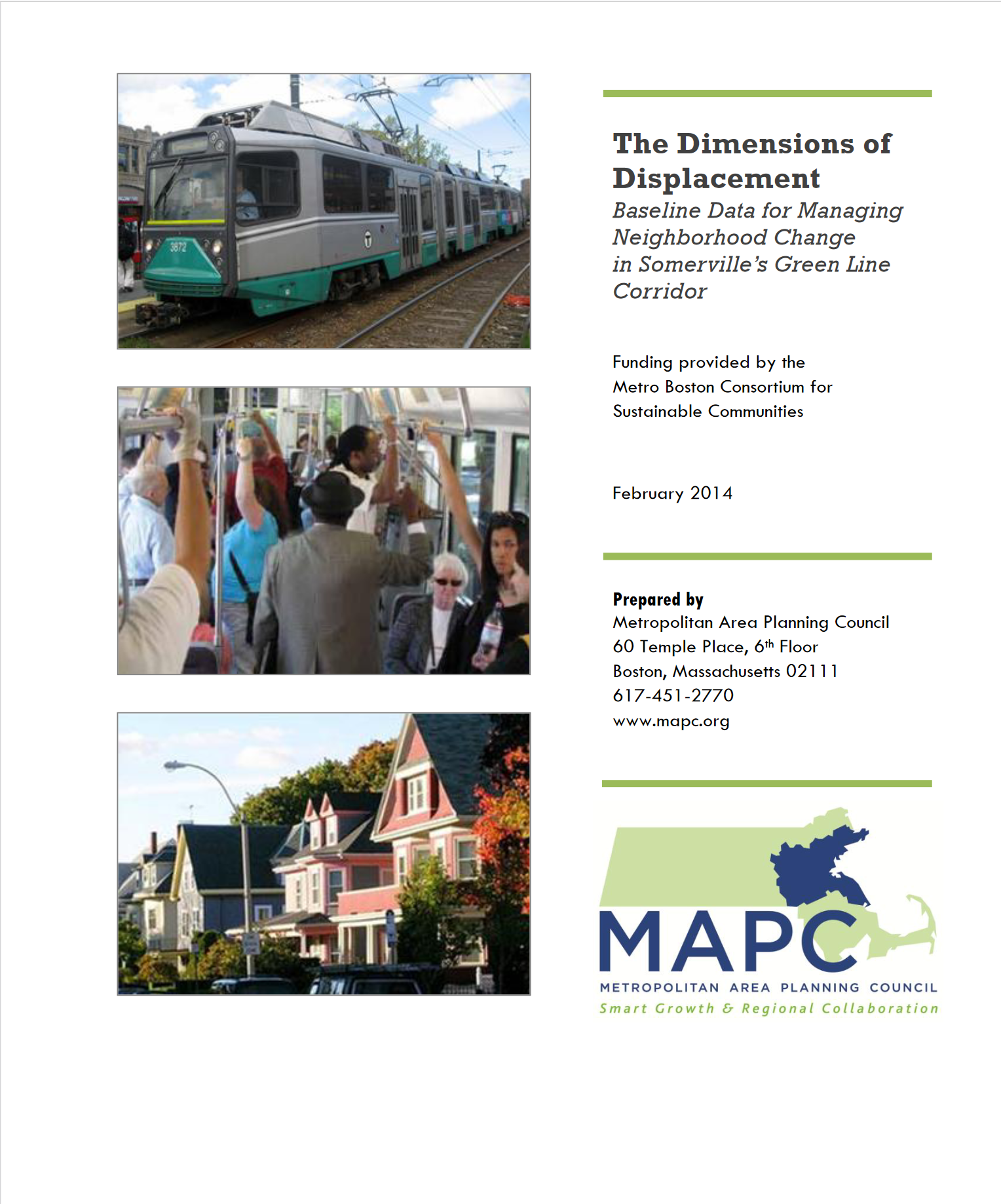The Green Line Extension may benefit the City of Somerville in many ways, but it may also cause displacement of low- and moderate-income residents, finds this critical report released February 2014 by the Metropolitan Area Planning Council (MAPC) in partnership with the City of Somerville, Somerville Community Corporation, Somerville Transportation Equity Partnership (STEP), Friends of the Community Path, and Massachusetts Smart Growth Alliance.
The Green Line Extension through the City of Somerville will dramatically improve transit mobility for both residents and businesses. A trip to Boston that currently requires multiple transfers and modes will soon be possible with a “one-seat ride” on the Green Line, saving time, increasing the convenience of transit, and reducing auto reliance. New growth attracted to the Green Line corridor by this improved accessibility may expand housing opportunities, increase ridership and fare revenue, and bolster municipal finances with new tax revenue. However, previous experience in Somerville and across the country suggests that the creation of new transit service may result in unintended negative consequences if rising rents and land values causethe displacement of low-and moderate-income residents. Specifically, affected households may relocate to less-accessible areas where housing prices are lower but transportation costs are higher, and this movement of transit-dependent populations away from areas near stations may result in lower-than-anticipated ridership levels. Furthermore, widespread displacement would profoundly damage the city’s social and cultural fabric.

